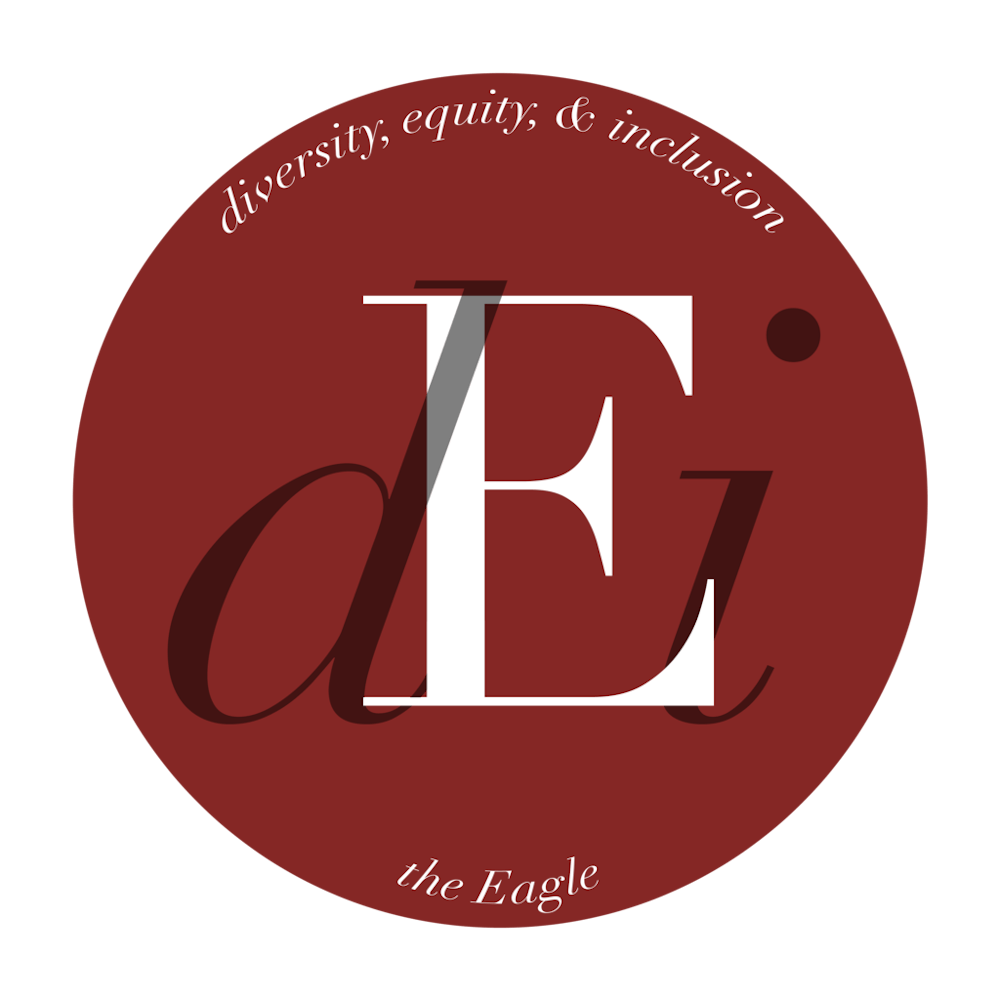The Eagle’s Diversity, Equity and Inclusion group held its first meeting of the spring semester Jan. 26 to establish goals and to analyze the staff diversity report.
Staff diversity report
The data for the staff diversity report was collected through The Eagle’s spring 2022 staff acceptance form, which all staff members filled out upon acceptance to The Eagle. The form asks optional demographic questions about race, ethnicity, sexual orientation, financial aid status and gender.
This semester marks the largest known Eagle staff at 115 members.
According to the form, the percentage of multiracial students on staff has increased since fall 2021, with roughly 15 percent of staff identifying as multiracial this semester — three times the percentage of American University undergraduates who identified as multiracial.
This semester, the number of staff members who identify as white also increased, with about 69 percent this semester compared to 65 percent in fall 2021. Both of these figures are higher than the amount of American University fall undergraduates who identify as white, which was about 53 percent in 2020.
Data from the acceptance forms shows that there has been slight decreases in Latinx and Hispanic and South Asian representation among staff since the fall 2021 semester and slight increases in Black, Southeast Asian and East Asian representation.
The majority of staff who chose to disclose their sexual orientation identifies as heterosexual, but 33 percent of staffers that identify as being LGBTQ+, up from 27 percent last semester.
The majority of staff identifies as female, a steady statistic over the past few semesters. The percentage of male staffers increased from about 25 percent to 27 percent, and gender-neutral/non-conforming staff members increased slightly.
This semester’s staff demographics marked an increase in students who receive financial aid on staff. Around seven percent of spring staffers are recipients of the Pell Grant — a form of federal financial aid — and 28 percent receive federal financial aid that does not qualify as the Pell Grant. About 55 percent of staffers did not receive federal financial aid last semester, compared to 48 percent of staffers this semester.
The schools that staffers attend within AU vary, but the most common is the School of Communication, with 50 staffers in the SOC, 14 staffers in the School of Public Affairs, 13 in the School of International Service, three in the College of Arts and Sciences and two in the Kogod School of Business. The rest of staff reported a combination of the aforementioned schools.
Section goals
Managing editors also set goals to increase diversity, equity, inclusion and accessibility in their sections this semester.
For the News section, this includes seeking voices of student-led organizations to give input on The Eagle’s coverage, continuing the “On the Record” column, expanding local news and coverage of D.C. gentrification and assigning more explanatory-style stories.
The Life section looks to publish more multimedia projects, more stories centering international students, expanding local coverage of immigrant-owned businesses, increase coverage of AU events, have writers become more involved in the pitching process and work to ensure that all writers are well-rounded in their ability to cover any topic.
The Opinion section hopes to work on a multimedia project focusing on homelessness in D.C. and identities at AU, publish articles in more languages, start a podcast series, hold DEI workshops and culturally interactive events, get more feedback from writers, consider pitches of potentially overlooked stories and columns and increase staff interaction.
The Online section wants to improve closed captioning during Instagram takeovers, start adding alt text and image descriptions to post captions, do more live event coverage, monitor direct messages more frequently for better content coverage, increase standalone social media content, do features of AU students, post audio pieces and collaborate with other sections.
The Multimedia section will be setting out to produce more content focusing on populations underrepresented in reporting, take a wider range of photos by sending photographers out more frequently, look into transcribing podcasts, provide alternative forms of taking in information such as infographics and ensure that all DEI goals are reflected on The Eagle’s TikTok account.
El Águila hopes to nail down a Spanish language style guide, publish more DEI-related articles, cover nonbinary students in Spanish classes and the gendered nature of the language, report on more issues pertaining to international students, cover AU Latinx staff, produce more multimedia content and work with student groups on campus.





